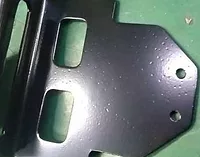Finishing Review: Coatings Formulation
As it states in the preface, this textbook has been designed to familiarize technicians, engineers and chemists with the practice of formulating paints. Authors Müller and Poth set the stage for obtaining a clear understanding of coatings formulation in the first three chapters of this new textbook by providing a foundation for the technology before delving into the specifics of resin technology and coating types. Film formation, pigment dispersion and the basic calculations for characterizing a formulation are presented in an easy-to-read format. Obviously written by skilled teachers, the book proceeds in a very logical pattern, building on the basics of the technology and focusing on the chemistry of the coating binders, from basic solvent systems to modern-day powder coatings. It is very different from other attempts, which often appear to be more a collection of independent articles bound together to form a book with a poor connection of ideas from chapter to chapter.
In fact, the book reads so well that I was more than halfway through it before I started to realize that although the book is titled Coatings Formulation, I was being presented with a well written compendium of the resin chemistries used in coatings, with scant information on their performance properties and why they would be selected as opposed to other chemistries. The authors also do not fully address other coating components. Obviously, the resin system plays a major role, but so do pigments, fillers, solvents and additives. Pigments and fillers can comprise more than 35-40% of many coatings. A study of just resin chemistries is not coatings formulation.
Formulation is when a coatings chemist matches his or her knowledge of resin systems, pigments, fillers and additives to develop a product that meets the customer's full specification, which includes color, durability, smoothness, surface treatment effects, cost and other parameters. Although the authors discuss the dispersion of pigments from a physical chemistry perspective in a very informative manner, that's as far as they go. Likewise, no attempt is made to discuss application and the effect of composition on this basic characteristic. Coatings formulation is much broader than just the resin/binder selection addressed in this book.
The book does provide an excellent overview of the resin chemistries used in coatings, and it should be titled as such. Companion books written in a similar manner focusing on color, pigments and fillers, and composition effects on coatings application would be welcome additions to a coatings formulator's bookshelf.
Title: Coatings Formulation
Authors: Bodo Müller and Ulrich Poth
Publishers: Vincentz Network GmbH & Co, KG, Hanover, Germany/William Andrew Publishing, Norwich, NY
Publication Date: June 2006
Pages: 300
Order Information:
www.williamandrew.com, www.coatings.de, www.amazon.com
In fact, the book reads so well that I was more than halfway through it before I started to realize that although the book is titled Coatings Formulation, I was being presented with a well written compendium of the resin chemistries used in coatings, with scant information on their performance properties and why they would be selected as opposed to other chemistries. The authors also do not fully address other coating components. Obviously, the resin system plays a major role, but so do pigments, fillers, solvents and additives. Pigments and fillers can comprise more than 35-40% of many coatings. A study of just resin chemistries is not coatings formulation.
Formulation is when a coatings chemist matches his or her knowledge of resin systems, pigments, fillers and additives to develop a product that meets the customer's full specification, which includes color, durability, smoothness, surface treatment effects, cost and other parameters. Although the authors discuss the dispersion of pigments from a physical chemistry perspective in a very informative manner, that's as far as they go. Likewise, no attempt is made to discuss application and the effect of composition on this basic characteristic. Coatings formulation is much broader than just the resin/binder selection addressed in this book.
The book does provide an excellent overview of the resin chemistries used in coatings, and it should be titled as such. Companion books written in a similar manner focusing on color, pigments and fillers, and composition effects on coatings application would be welcome additions to a coatings formulator's bookshelf.
Title: Coatings Formulation
Authors: Bodo Müller and Ulrich Poth
Publishers: Vincentz Network GmbH & Co, KG, Hanover, Germany/William Andrew Publishing, Norwich, NY
Publication Date: June 2006
Pages: 300
Order Information:
www.williamandrew.com, www.coatings.de, www.amazon.com
Looking for a reprint of this article?
From high-res PDFs to custom plaques, order your copy today!




